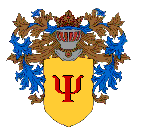
Early Medicine and Physiology
Dr. C. George Boeree

Early Medicine and Physiology
Dr. C. George Boeree
The ancients
Although always a part of philosophy, psychology has close ties as well to biology, especially human physiology and medicine. As long as the mind is in some way attached to a body, this is inevitable. But, as you know, it took quite a bit of prying the mind apart from its religious connection with an immortal soul before that intimate connection would be acknowledged!
“The First Physician,” at least as far as the Greeks were concerned, was Asclepius. He started a partially mystical society or guild of physicians that was to have an influence for many centuries to come. During that time, he gained god-like status. Even Socrates, as he lay dying of the overdose of hemlock, told his student Crito to sacrifice a cock to Asclepius, presumably in thanks for an easy death.
More clearly historical is Acmaeon of Croton (b. 435 bc) in southern Italy. A pythagorean by philosophy, he was known for his anatomical studies. He is the first person we have record of who dissected the eye and discovered the optic nerve. His theory of the mind included the idea that the brain is the seat of perception and thought, and that there are connections from all the sense organs to the brain. He believed that it was pneuma, meaning breath or animal spirits, ran through the body like neural signals.
Disease, he theorized, is at least in part due to a loss of balance in the body. He postulated a set of opposites, especially hot and cold, wet and dry, and bitter and sweet, that we need to balance in order to maintain health, by controlling our temperature, nutrition, and so on.
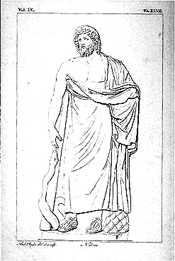 Hippocrates (b. 460 bc) of Cos in Asia
Minor, is better
known.
He was an Asclepiad -- i.e. a member of the medical guild, and is the
originator
of the Hippocratic Oath (click
here to read it. But note: Contrary to popular belief, few if any
doctors are required to take this or any other oath!). Despite
his background, he preferred to
avoid
mystical interpretations and stick close to the empirical
evidence.
For example, in a treatise called “On the sacred disease” (meaning
epilepsy),
he dismissed the usual demonic-possession theory and suggested that it
was an hereditary disease of the brain.
Hippocrates (b. 460 bc) of Cos in Asia
Minor, is better
known.
He was an Asclepiad -- i.e. a member of the medical guild, and is the
originator
of the Hippocratic Oath (click
here to read it. But note: Contrary to popular belief, few if any
doctors are required to take this or any other oath!). Despite
his background, he preferred to
avoid
mystical interpretations and stick close to the empirical
evidence.
For example, in a treatise called “On the sacred disease” (meaning
epilepsy),
he dismissed the usual demonic-possession theory and suggested that it
was an hereditary disease of the brain.
He is also known for his theory of humors. According to Greek tradition, there are four basic substances: earth, water, air, and fire. Each of these has a corresponding “humor” or biological liquid in the body: black bile, phlegm, blood, and yellow bile, in that order.
These humors, just like the four basic substances, vary along two dimensions: hot or cold, and wet or dry, like this...
| wet | dry | |
| hot | air/blood | fire/yellow bile |
| cold | water/phlegm | earth/black bile |
Like Alcmaeon said, the task of the physician is to restore balance when the relative proportions of these humors were out of balance. Hippocrates also noted some emotional connections to these humors.
It should be noted, despite the odd humor theory, that Hippocrates and with him Plato correctly recognized the significance of the brain. A bit later, around 280 bc, Erasistratus of Chios dissected the brain and differentiated the various parts.
For the most part, of course, medicine in these centuries, and for many centuries to come, consisted of a blend of first aid -- the setting of bones, for example -- and herbal remedies, plus a considerable amount of praying to the gods for miraculous intervention! (For a brief history of psychopharmacology from ancient times to the present, click here.)
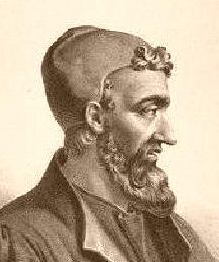 In the Roman Empire, another physician gained
fame that would last
well
into the Middle Ages: Galen was born 130 ad in Pergamon
in
Asia Minor -- a major center of learning at the time. He went to
Alexandria -- THE center of learning -- to study anatomy. In the Roman
Empire, dissection of humans was not allowed -- based, of course, on
superstitious
fear of retribution, not on any feelings of human dignity! So
Galen
studied the great apes instead.
In the Roman Empire, another physician gained
fame that would last
well
into the Middle Ages: Galen was born 130 ad in Pergamon
in
Asia Minor -- a major center of learning at the time. He went to
Alexandria -- THE center of learning -- to study anatomy. In the Roman
Empire, dissection of humans was not allowed -- based, of course, on
superstitious
fear of retribution, not on any feelings of human dignity! So
Galen
studied the great apes instead.
At the age of 28, he returned home for a while to serve as surgeon to the gladiators. His fame spread, and he went to Rome.
In addition to a great deal of fairly decent, concrete advice, he theorized that all life is based on pneuma or spirit. Plants had natural spirit, which causes growth. Animals have vital spirit, which is responsible for movement. And human beings have animal spirit -- from the word anima, meaning soul -- which is responsible for thought.
He believed that cerebrospinal fluid was the animal spirit, and noted that it was to be found in the cerebral vesicles of the brain as well as the spinal cord. He believed it traveled out through the nerves to the muscles, as well as in from the sensory organs. Not bad.
It was Galen who added the idea of temperaments to Hippocrates’ four
humors:
| Blood | sanguine, cheerful |
| Phlegm | phlegmatic, sluggish |
| Yellow bile | choleric, angry |
| Black bile | melancholy, sad |
Note how these words have come down to us. Note also how we use terms like “he is in a good humor,” “he has a bad temper” (as in temperature), “he has a dry wit” (referring to the wet-dry dimension), and "he is a hot-head" (the cool-warm dimension). Imbalances among these psychological states, he believed, were one more cause for diseases. Of course, this is the first known personality typology! It had some influence on people as varied as Alfred Adler, Ivan Pavlov, and Hans Eysenck.
The rebirth of medicine
It is some time before we again see real progress in medicine and physiology. In 1316, Mondino de Luzzi came out with the first European textbook on anatomy, appropriately called Anatomia. Early in the 1500's, Da Vinci, naturally, plays a part with numerous drawings of skulls and brains, and even a wax casting of the ventricles. In 1561, Gabriele Fallopio published Observationes Anatomicae, wherein he describes, among many other things, the cranial nerves and, of course, the fallopian tubes
Real progress had to wait for the invention of the microscope by Zacharias Jansen of Middleburg, Holland, in 1595 (or by his father, Hans). It would be refined by Antonie van Leeuwenhoek in Holland, Galileo in Italy and Robert Hooke in England.
(Soon afterwards, in 1608, a colleague of Zacharias Jansen in Middleburg, a German by the name of Hans Lippersberg, invented the telescope.)
Another major event was William Harvey’s (1578-1657) explanation of the circulation of the blood in 1628. Most physicians, still using Galen’s text, believed that the blood ebbed and flowed like a tide through the whole body!
Centers of medical education developed in the universities at Padua, Italy and Leyden, Holland. Here, students studied anatomy, did post-mortems, and even dabbled in what we would now call pathology. They performed careful case-studies, with detailed measurements.
Neurophysiology developed in parallel to all the other medical and physiological developments. We could point to Thomas Willis’s anatomical description of the brain in 1664 as the first major step. His book was illustrated by Christopher Wren, the famous English artist and architect. Willis coined the term neurology in 1681.
A very significant contributor to the development of our understanding of the brain was none other than our old friend Rene Descartes. He postulated a dualistic system, with a mind/soul interacting with the brain/body by means of animal spirits (pneuma). The will (an aspect of our souls) enters the brain as animal spirits via the pineal gland, interacts with the organization of nerves that represent established habits, courses through the nerves (viewed as tiny tubes) to the muscles, causing them to contract and so produce a behavior!
Likewise, actions upon the sensory neurons cause increases in pressure on the animal spirits, which course through the nerves to the brain, influencing the structure of the brain by repetition, as well as passing on to the soul as perceptions.
Sometimes, the actions of the senses led to rather immediate responses by the muscles. These would be called reflexes by Descartes' countryman, Jean Astruc, and were defined as cycles of action that do not require the intervention of the mind or soul. Descartes did include far more complex behavior as reflexes than we would today.
Passions (roughly, emotions) also come from outside the body, essentially as sensations. They lead to a variety of physiological changes as well as reflex actions: We see a bear, we run! In animals, these passions are just sensations and reflexes. We, however, experience them with our mind/soul as wonder, love, hate, desire, joy, and sadness, as well as hundreds of combinations.
Descartes' ideas, minus the soul, would be promoted by Julien Offay de la Mettrie (1709-1751) in a landmark book called Man a Machine (1748). Robert Whytt (1714-1766) would later lay down the neurological basics of the reflex, and introduce the terms stimulus and response. In 1791, Luigi Galvani cllinched these concepts with his famous experiments involving the electrical stimulation of frogs' nerves.
About 1721, Lady Mary Montegu introduced a strange medical practice she had seen while visiting in Turkey: Inoculation. Instead of letting a full-blown case of smallpox damage their lovely skin, young women had pus from someone with a mild case of smallpox injected just under the skin. (Don't laugh: Today, people have themselves injected with the poison botox to erase wrinkles!) Edward Jenner later began inoculating people against the smallpox by vaccinating them with cowpox material. The antibodies produced made one immune to smallpox as well as further cases of cowpox.
The 1800's
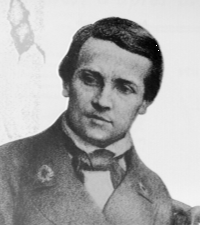 Medicine got its greatest boost in
the 1800’s, especially after Louis
Pasteur (1822-1895) came up with the theory that diseases were
caused
by micro-organisms. The new field of bacteriology continued with
Pasteur’s friend Joseph Lister (1827-1912), who introduced the
novel
idea of antiseptic conditions in surgery -- especially washing one’s
hands!
Medicine got its greatest boost in
the 1800’s, especially after Louis
Pasteur (1822-1895) came up with the theory that diseases were
caused
by micro-organisms. The new field of bacteriology continued with
Pasteur’s friend Joseph Lister (1827-1912), who introduced the
novel
idea of antiseptic conditions in surgery -- especially washing one’s
hands!
Charles Bell (1774-1855) and François Magendie (1783-1855) independently clarified the distinction between sensory and motor nerves. They noted that sensory fibers enter the posterior roots of the spinal cord, and motor fibers leave the anterior roots. Bell is also the first person to describe the facial paralysis we now call Bell's palsy. And Magendie was the first to test the cerebellum's functions.
Franz Joseph Gall (1758-1828) of Vienna and, later, Paris,
studied
the shapes of skulls and concluded that the various bumps and
depressions
in each person's head related to certain psychological and personality
characteristics.
This would become very popular as phrenology, even though serious
scientists
such as Bell and Flourens thought it absurd. (For
a phrenological map of the head, click here. Please don't
misunderstand: There is little, if any, truth to this map!)
Marie-Jean-Pierre Flourens (1794-1867) concluded that the cerebrum was in fact responsible for thought and will, and that it operates holistically -- not as Gall would have it! He noted that the other parts -- cerebellum, medulla, etc. -- had different functions, but that each also works holistically within itself. It is also Flourens who introduced ablation -- the removal or destruction of particular parts of an animal's brain -- as a way of studying the connection between the brain and behavior.
However, things just never seem to be simple. Paul Broca (1824-1880), a French surgeon, had a patient that lost the power of speech due to a lesion in what is now called Broca’s Area. Another surgeon, Carl Wernicke, published a book on aphasia in 1874. He, of course, discovered the significance of Wernicke's area by doing an autopsy of a patient who had lost the ability to comprehend speech.
In 1870, two researchers, Gustav Fritsch and Eduard Hitzig, used direct electrical stimulation of the brain in a dog to discover, among other things, the motor and sensory cortices. Four years later, Robert Bartholow did the same with a human brain. Their work established that there is indeed some localization of function -- it just doesn’t have anything to do with bumps on the head.
Johannes Müller (1801-1858), working in Berlin, developed the doctrine of specific energy of nerves. Each nerve, when stimulated, leads to only one sensory experience, even if it is stimulated in another manner than usual. A simple example is the light flashes you see when you press against your eyeballs! This (I think unfortunately) led to increased belief in indirect realism -- i.e. that we don’t actually experience the world directly, much less accurately.
Hermann von Helmhotz
Hermann von Helmholtz is arguably the most famous German scientist of the 19th century. He was born in 1821 in Potsdam, Germany, to Caroline and August Helmholtz. His father, a teacher as well as an officer in the Prussian army, began schooling young Hermann at home because of health problems.
He did attend Gymnasium from the ages of nine to 17. He wanted to study physics, but entered medical school in Berlin in 1838. His parents could not afford to send him without the scholarship given to medical students who promised to serve in the army after graduating.
Helmholtz befriended several other young men who were students of Johannes Müller at the nearby University of Berlin. Of these friends, Emil Du Bois-Reymond went on to discover the action potential, while another, Ernst Brücke, would have a certain Sigmund Freud as a research assistant. These students of Müller, in contrast to their professor, swore a solemn oath to avoid vitalism, the belief that there was something unique about living, as opposed to non-living, matter: “No other forces than common physical chemical ones are active within the organism.” Helmholtz adopted their position as well.
In 1842, he became an army surgeon at Potsdam, and continued studying math and physics on his own. In 1847, he read a paper at the Physical Society of Berlin on the conservation of energy. This alone would have won him an honored place in history!
Soon after, he became an associate professor of physiology at Königsberg, and married. During this period of his life, he measured the speed of the neural impulse. Prior, it was thought to be either infinite or the speed of light. He found it to be a paltry 90 feet per second. This put neurological activity well within the limits of ordinary physical and chemical sciences!
Along the way, in 1851, he invented the ophthalmoscope -- the device doctors use to look into your eye.
In 1855, he moved to Bonn to be professor of anatomy and physiology. Here he began his research into sight and hearing. In 1856, he published the first of three volumes called the Handbook of Physiological Optics.
He moved once again in 1858, this time to Heidelberg as professor of physiology. During this period, his wife died, and he later married a young socialite. His philosophical work focused on epistemology, and he continued his research on sight and hearing. His explanation of color vision -- that it is based on three cones sensitive to red, green, and violet -- is still remembered as the Young-Helmholtz theory. He became quite famous.
In 1870, he was offered the chair in physics (his first love) at the University of Berlin. In addition to a huge salary, he was offered living quarters and a new Institute of Physics.
He published a number of papers on geometry, especially the non-Euclidean kind that would be so important to people like Einstein in the twentieth century. His main focus was physics, of course, and one of his prize students was Heinrich Hertz, who was the first person to actually generate radio waves in 1888.
Helmholtz traveled to the US in 1893 as the German representative to the Chicago World's Fair. A bad fall on ship put his health in serious jeopardy. He died of a cerebral hemorrhage in September of 1894.
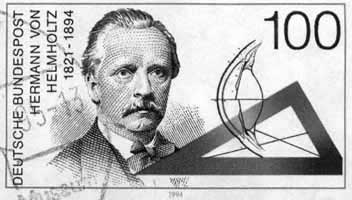
© Copyright 2000 and 2002, C. George Boeree